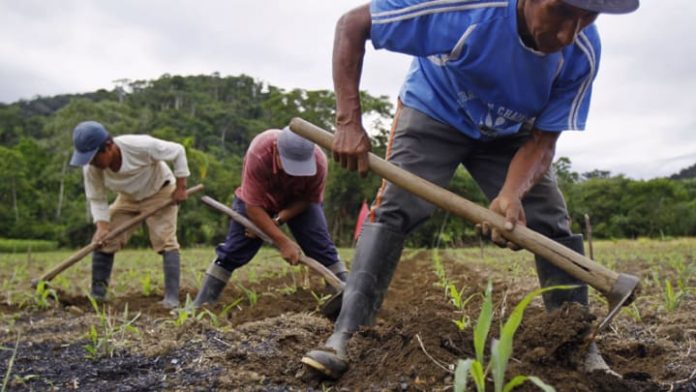=COMMENTARY=
A Commentary By Amin Kef Sesay – 18th August 2019
Vice President Dr. Juldeh Jalloh has said Sierra Leone spends about USD400 million annually importing just the staple food rice, which can be abundantly grown here and exported to all the other West African countries that consume rice and are also importers.
Added to this are the figures for the import of eggs, beef, milk, onions, oil, etc., and you see how growing and eating our own foods sustainable in an environmentally friendly manner is the overall solution to solving all the SDGs – yes, all the SDGs.
Yes, feeding the nation in a changing environment will require major shifts in government policy to incentivize environmentally friendly agricultural solutions.
It will also require change on the demand side, with consumers needing to alter their eating habits to fall more in line with nutrition guidelines recommended by the World Health Organization.
For example, cassava, potato, yams, cocoa, bananas, plantains, etc, are foods that can be satisfactorily substituted for rice in our diet. No attention is been paid to growing these on large commercial scales.
At the 2019 Crawford Fund Annual Conference in Canberra, Australia this week, speakers were optimistic about the impact that changes in technology, science, and agricultural practices could have on sustainable food production. But the external factors of politics and consumerism were seen as the biggest risks.
“We need a green revolution again,” Charles Godfray, director of Oxford Martin School, told the audience. “And the revolution has to be not only on the supply side as the industrial revolution and the green revolution was, but also on the consumption and demand side.”
Studies on how to reduce the climate impact of food production have looked at reducing waste, increasing investment in technology, and changing diet.
With a dietary shift that is consistent with recommended nutrition guidelines within stable climate limits, Sierra Leone can go a long way in terms of dramatically increasing and diversifying food production that at the same time would have huge employment, incomes, health and economic benefits through reduced health care costs and a more productive workforce.
Incentivizing changing agricultural practices is the most important strategy needed going forward. Yet how many of our small scale hugely underfunded stepping-up on their agricultural investments, including production methods?
Uncertainty around environmental conditions and markets make our farmers afraid to take a risk on new crops. Also, without funds, they are unlikely to invest in new approaches that would improve yield and reduce environmental impact.
Through central government, local councils and INGO incentives, this could change.
For example, in Kenya, insurance for farmers that can be purchased using a mobile phone when buying seeds means they have a backup if crops fail.
In Ghana 300,000 farmers are paying for climate advice to improve their ability to prepare and respond to changing environmental conditions. This cannot happen in Sierra Leone without the right policies and institutions.
There is also the critical need to introduce incentivized sustainable modern farming cultural practices.
For example, in India, the green revolution was incentivized in part by charging nothing for electricity used to pump water onto crops. However, this led to overwatering and increasing emissions.
Using renewable energy to pump water as well as to support other functions could help, using a solar power model where farmers can produce energy and sell to their communities.
It’s not a matter of subsidies but a matter or re-orienting financial flows into this sector.
Thus, what is needed to revolutionize agriculture in Sierra Leone is the right business models, and the right kinds of loans that banks can provide to completely bypass the local Shylocks that are responsible for the continued poverty of our small scale farmers.
Along the above line of thinking, the next decade is going to need fundamental transformation of small-scale agriculture to meet the environmental and social issues that need to be addressed in making agriculture the center-piece of our development planning.
Accordingly, any incentives and policies need to target specific sub-groups of farmers — especially small-scale farmers — and not just treat them as one group because there are different scales, different sizes, men, women, and different geographic locations.
So the transformation must start with disaggregating who we are talking about when we use the term ‘small-scale farmers’ to understand what sort of incentives are going to drive who to change practices.




